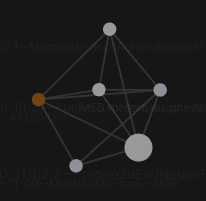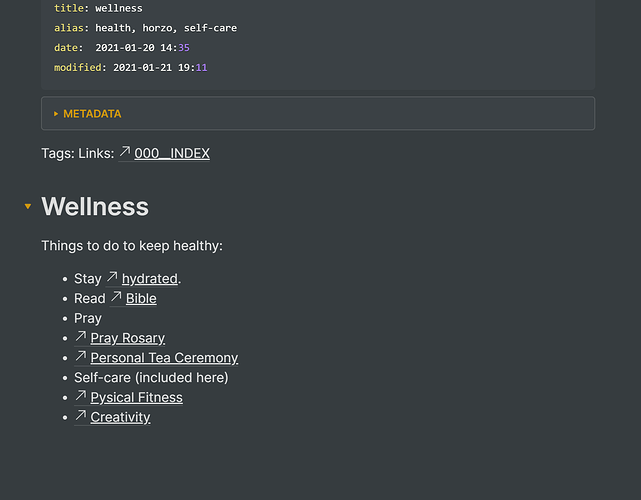This is my new process. I’m still shaping it. I have a note for each organizations/client, another for each project, and another for each meeting. I haven’t needed a note for any contacts yet, but I might have contact notes in the future.
For the organization note, its is kind of the general MOC. I might have multiple projects with a single organization.
The project note tracks requirements, progress, and summarizes things I’ve learned. If I have a meeting, I embed it in the Project note under the meeting date ![[MeetingName#Agenda/MeetingNotes]]. I might make a # Summary heading in the meeting notes template, but for right now my notes are short enough not to need them. I collect the action items, but I don’t need them in my project page because they should really live in my task manager. This is why I only embed the notes.
If it is a good meeting, there should be an agreed upon agenda before it begins. I would have an outline already in the note and fill in what is discussed in the outline. In the non ideal case, I might have a few bullet points I want to bring up already in there and then just take notes. I have a section for action items and questions. You could just use tags instead of the separate sections – tag:actionItem or tag:Question if you need to note something quickly. I am experimenting with drafting the followup email in Obsidian. The formatting isn’t working well with my email client. I don’t know if I will make emails their own note or not. Many of the followup emails involve me learning something, which is why I draft them in my PKM system.
Organization note template:
YAML
Keywords:
Status:
Overview
Contact:
Contact Email:
Objective:
External Links
Projects
Project 1 Name
![[Project1#Progress]]
Meetings
![[Meeting1#Agenda/ Meeting Notes]]
![[Meeting 2#Agenda/ Meeting Notes]]
Project 2 Name
![[Project2#Progress]]
Meetings
![[Meeting1#Agenda/ Meeting Notes]]
![[Meeting 2#Agenda/ Meeting Notes]]
Project Template:
YAML
Keywords:
Status:
OmniFocus Link
DevonThink Link
Reference Manager Link
Overview
![[OrganizationNote#Overview]]
Requirements
Progress
Title (Date)
Title (Date)
![[Meeting1#Agenda/ Meeting Notes]]
Learnings
Meeting Note Template
YAML
Keywords:
Overview
Organization: [[Organization]]
Project: [[Project]]
Scheduled:
Attendees:
Links:
Agenda/Meeting notes
Questions
Action Items
Follow-up Email



